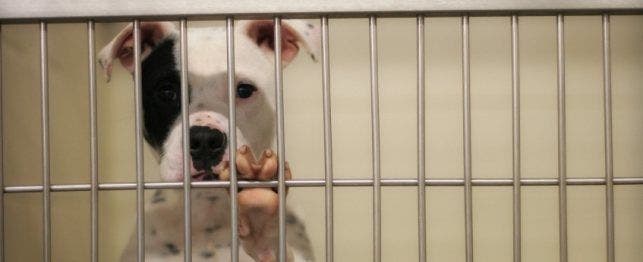
Just for Kids: Crating Your Puppy
Your mom and dad insist that your puppy be trained to stay in a crate. You hate the idea; you think it would be like putting your puppy in jail. But you may be surprised to find out that most puppies and dogs like being in their crates.
In the wild, dogs look for a den or safe area to sleep. Domestic dogs do this, too. It is called "denning." You will often see a dog sleeping under a table or desk or next to a piece of furniture if no other area is provided for them to den. It makes them feel safe and secure.
When you provide a crate for your puppy, it becomes his safe place. He can go inside and feel secure. He also knows he won't be bothered. It might be the same way you feel about having a tree house, a favorite place to hide or even your own bedroom.
A crate is a great tool for housetraining your puppy, too, because dogs don't like to soil their immediate environment. They also make an excellent place for a "time-out," though you should never put your pet in a crate for punishment. In addition, a crate in the car is probably the safest way for a puppy to ride.
Making Pups Comfortable
The best way to make your pup feel comfortable is to buy two crates. Put one in your bedroom so he can sleep beside you at night, and put the other out near the family. Line the crate with a soft blanket and add some small treats, then show the puppy how to get in. If you can't buy two crates, you can move one around.
Once your puppy has figured out how to go in and out of his crate and has satisfied his curiosity about it, use a cue word – such as "kennel" or "crate" – as he moves toward the crate and give him a treat as soon as he enters. Repeat this several times at different times until he goes in when he's told to. Soon you can shut the door for short periods, without making a big deal about it. In fact, it's best to ignore your pup altogether while opening or shutting the door.
Once your puppy is willing to rest in the crate, start putting him in for different periods of time, and at different times of the day, while you're at home. Soon the puppy will learn to rest while in his crate, and that's exactly the way you want him to feel – at home, relaxed and comfortable in his own little den. Then when he is in his crate when you go out, he won't be so worried.
When Your Pup Says No
Occasionally you may want your pup to be in the crate but he wants to stay out. Don't try to fool him by calling him to you and then forcing him into the crate. Instead, use a command like: "Go to your crate," and lure him in with a little food. Give him the treat as soon as the pup settles down inside; praise him and keep feeding him while he's inside. The minute he ventures out, turn off the food supply – and the charm.
Put a few treats in the crate so the pup will develop the habit of going into the crate by himself, earning more praise and even more treats. Sooner or later, he'll learn that he gets lots of attention, affection and goodies inside the crate – and very little in the way of treats outside the crate.
The Crate and House-training
Crate training is a wonderful way to help you housebreak your puppy. Puppies learn very early to go potty away from their den. As soon as you take your puppy out of his crate, take him outside to relieve himself. Play with him only AFTER he has gone in the yard. Then praise him a lot for going outside.
Crating Rules
- Never put your puppy in his crate as punishment.
- Never leave your puppy in his crate for longer than two or three hours when you are not home.
- If you purchase a large crate that will fit your puppy when he is full grown, then you should partition off part of it so that your puppy doesn't have too much room. If the crate is too large, your puppy will use one end to go potty.
- Move the crate from room to room with you and allow your puppy to sleep in his crate in your bedroom at night. This gives him a sense of security and he will settle down much more quickly knowing you are right there.
- Never crate your puppy with a collar on. Dogs can choke themselves to death. It's probably a good idea to remove any collar while the dog is in the crate.
- Never crate your puppy with a leash attached for the same reason.
- Use safe toys only, nothing the dog or puppy can get apart and choke on while you're not there. This includes rawhide chewies and squeaky toys.
One day when your puppy has grown up a bit, you may look in his crate and find that he has gone inside all on his own and curled up and gone to sleep. Soon you will see that whenever he is tired or wants some time alone, he will do the same.